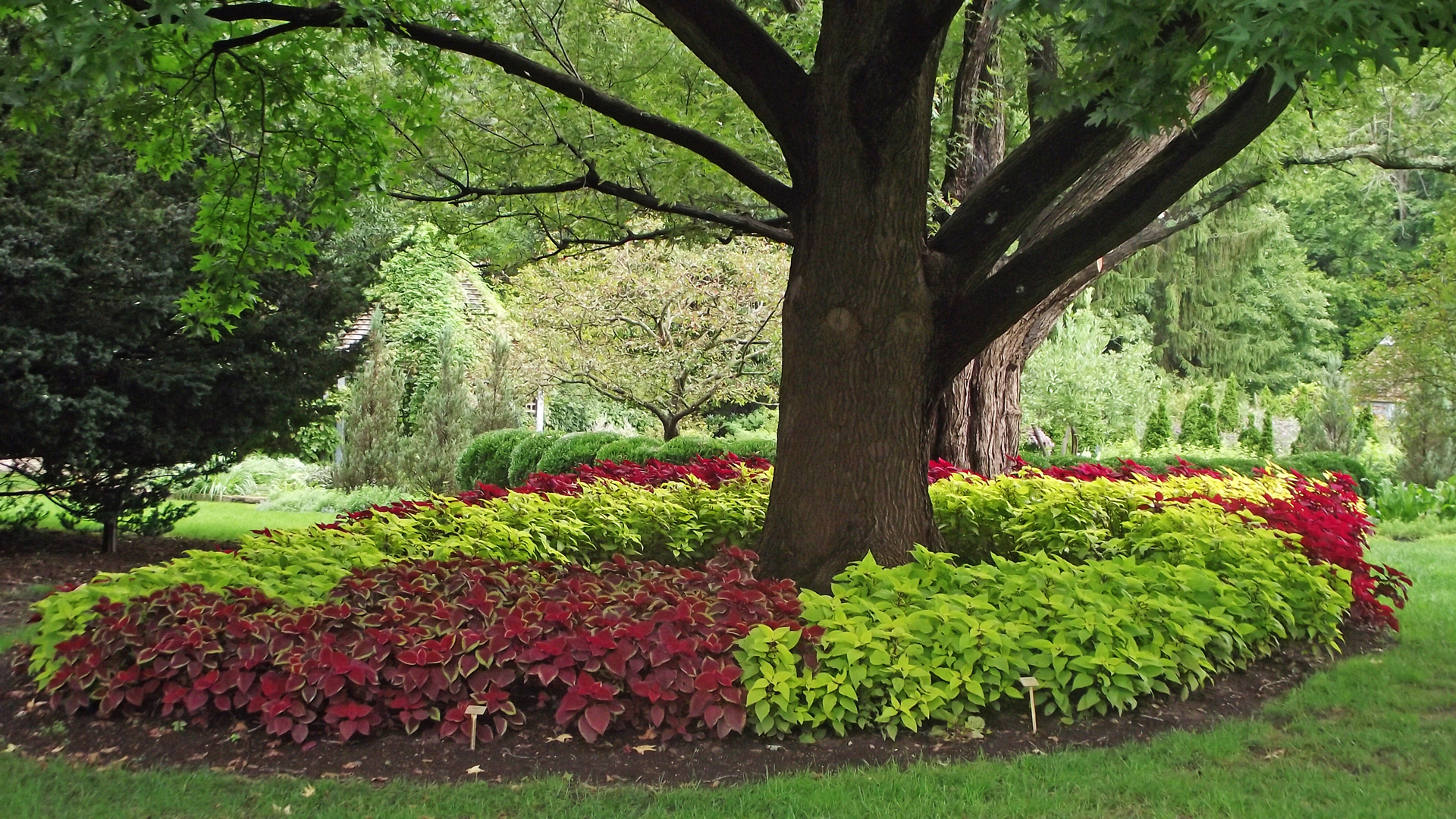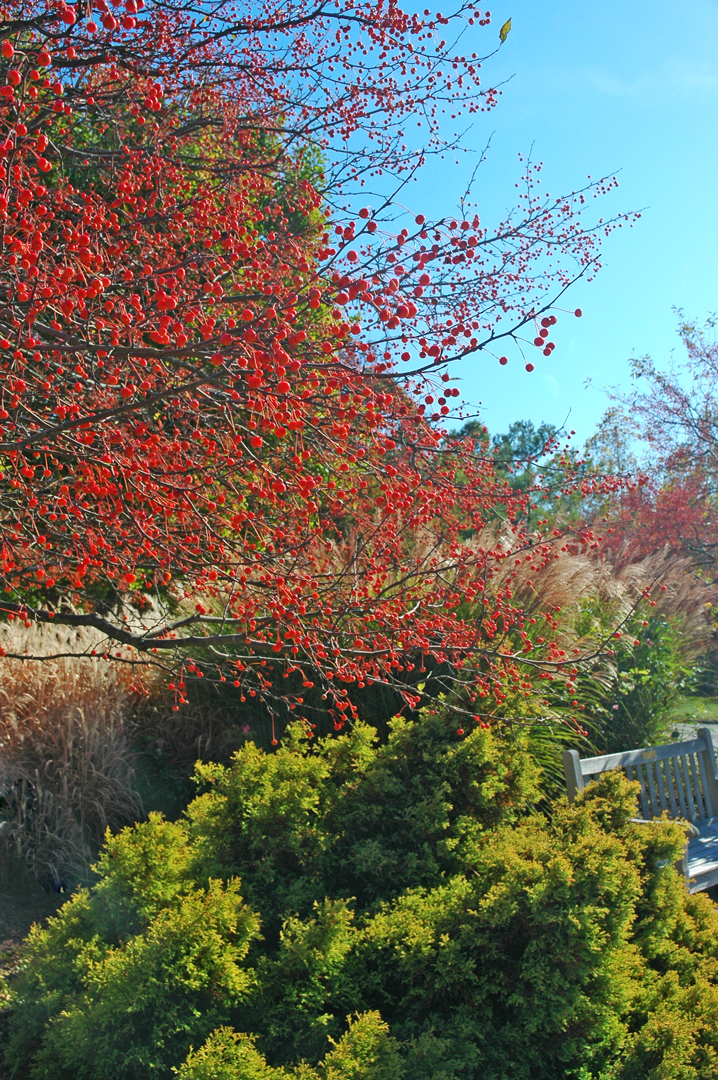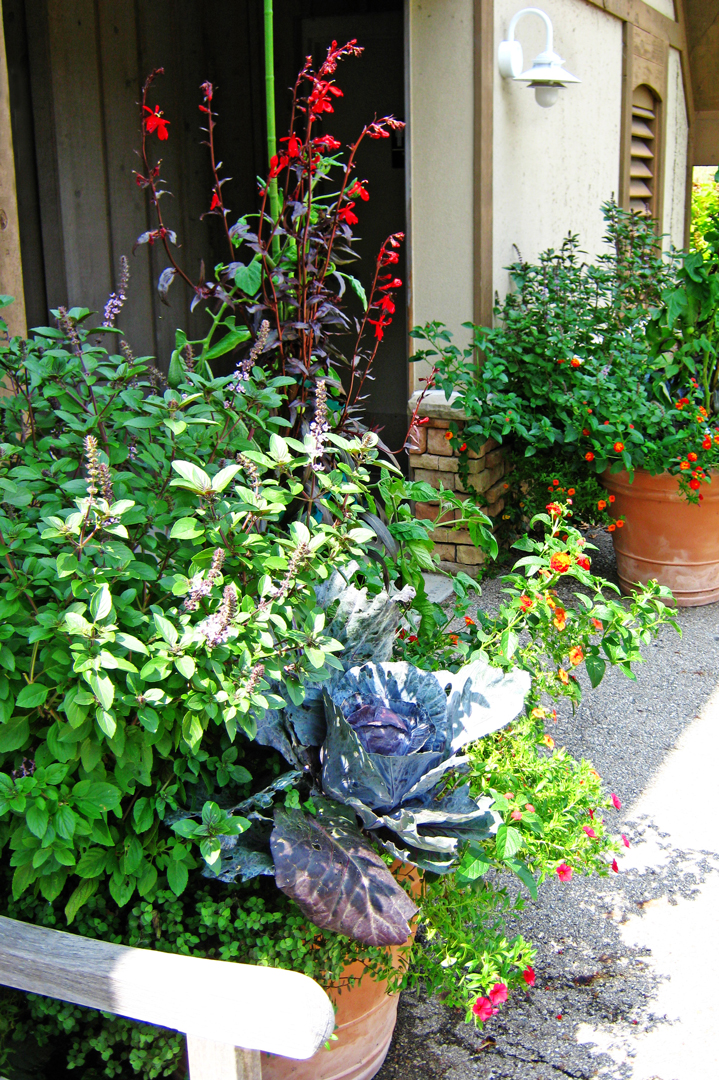Growing our own food doesn’t have to change our residential landscape into a row-covered produce farm. The food that we grow can also be quite pleasing to the eye and there are some simple ways to add them to your garden. Here are five ways to incorporate edibles into an existing landscape.
Look down

First, remember to look down. Many types of thyme grow quite nicely between landscape pavers or even between the cracks in your sidewalk. There are some herbs with shallow roots that tolerate shade, including chives, sweet woodruff, lettuce and spinach. You can plant these in a ring around a tree. Be mindful there are some trees that do not want other plants to grow near them. Black walnut trees expel juglone, a toxic chemical that doesn’t allow for certain plants to grow near the roots of this tree. Add edibles to your favorite annual container with ground cover plants like strawberries.
Look up

Second, don’t forget to look up. Consider edible trees and shrubs. For example, instead of planting a small maple tree, consider a north star tart cherry. Replace a barberry hedge with blueberries. Plant an apple tree to get beautiful flowers in the spring, shade in the summer, and fruit in the fall. Raspberries can be trained to climb a fence and grapes can easily cover an arbor or other tall structure.
Extend your gardening season
The third way to incorporate more edibles is to consider extending your gardening season. Cool season crops like lettuce, spinach, cabbage and kale can be planted now, weeks before the frost free date. As summer begins to wane and in preparation for cooler temperatures, consider a second planting of those crops in August. You can even keep growing these plants through winter by using a cold frame and some straw bales.
Add containers
A fourth idea is to add a few containers to your landscape. Potted herbs can be both aesthetically pleasing and useful. Cherry tomatoes can be added to window boxes or even a hanging basket. Edible flowers like nasturtiums, violas and borage can be grown in containers too. Containers are movable and will allow for better management of crops for disease and pests. They can be removed easily from an insect-infested garden bed or away from a diseased tree. You can also better monitor them for fertilizer needs and eliminate any exposure to pesticides.
Help plants work together

Finally, help plants work together. Plants that belong in the Compositaceae plant family tend to have large ray-like petals and can be annual or perennial. Common examples include sunflowers, cosmos and black-eyed Susan. These types of flowers pair well with members of the carrot family (Apiaceae) like celery, carrots, parsley and dill. The two very different types of flowers from each of these plant families attract both pollinators and beneficial insects.
If you would like to learn more about how to grow salad in your tree rings and fresh herbs in your garden path join Inniswood for our spring programs. A strawberry garden party is the topic for Children’s Garden Day on April 30. This year why not make your yard both beautiful and delicious?
CINDY MARAVICH
Inniswood Environmental Educator
